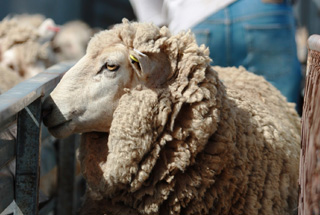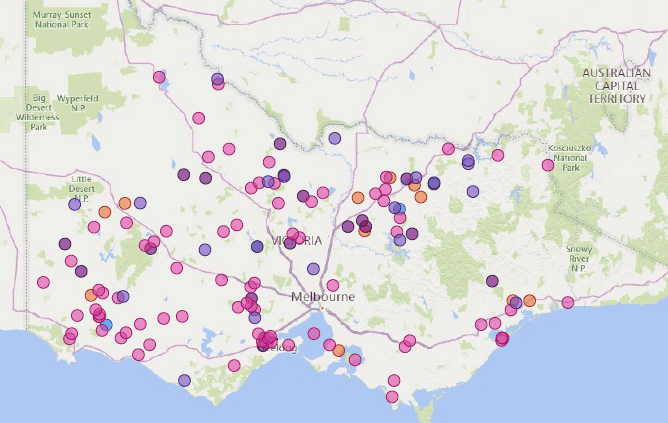Your sheep need two summer drenches

Worms, or the internal parasites such as the Trichostrongylusspecies, Teladorsagia circumcincta and Haemonchus contortus, are the number one cause of disease recorded in sheep in Victoria.
These disease events are often reported to Agriculture Victoria only when sheep are dying from worm infestations.
On top of these, there will be many more cases of reduced production such as reduced lamb and wool growth, and poor body condition in adult ewes, leading to production inefficiencies.
This occurs in sheep right across Victoria, in every year and in every season. Don’t be fooled, worms are a serious production and welfare issue for sheep!
Trichostrongylusspecies and Teladorsagia circumcincta are the winter scour worms. The mainstay of their control in Victoria has long been the double summer drench, with the first given in November (at the end of spring) and the second in February (at the height of the summer heat).
Haemonchus, otherwise known as ‘barber’s pole worm’, is a summer-active species, where there is summer moisture. If your property is infected with barber’s pole worm, the double summer drench will coincide with the times when you would be drenching to control these even nastier worms.
The increasing incidence and severity of drench resistance in the past 40 years has led to several changes to the previously recommended control strategies. These include minimising summer drenching, especially by eliminating the second summer drench.
These changes are often suggested as necessary by the refugia hypothesis: the refugia are the pastures where some worms are present, rather than in the sheep, at the time a drench is given. These worms escape exposure to the drench, so that they are not subject to selection for resistance to that drench.

Studies performed in the 1970s in Victoria showed that 40 per cent of the winter scour worms infesting sheep in the autumn, after the break, originated from worm eggs deposited on the pasture the previous spring.
These surviving worms form the backbone of the infestations that afflict Victorian sheep the following winter, causing disease, deaths, production loss and poor welfare outcomes.
So, where do the other 60 per cent of worms present in sheep in the autumn come from? These have been picked up off the pasture right through summer. The double summer drenches keep these newly established infestations in check, allowing sheep to live through summer relatively untroubled by worms.
Some producers are successfully managing the worm levels in their sheep by intensively monitoring the level of worms and the effect that their sheep flock management is likely to be having on the ability of the sheep to cope with worms.
These producers actively perform worm egg counts to make their drenching decisions, and consult with experienced veterinarians or consultants who provide recommendations based on more than just the worm egg count, and the age and class of sheep.
Only in these circumstances, where the farmer is following best-practice recommendations, can the need for a second summer drench be reduced. If you are not doing all these things, the best advice is to give all your sheep two summer drenches.
Conclusion
The title is slightly misleading but is intended to grab your attention: I hope it did!
Unless you do the best-practice things in the boxes below, your sheep do need a second summer drench!
For more advice, please visit WormBoss.com.au.
Best-practice worm control year-round
- Monitor worm levels at critical times using worm egg counts.
- Test for drench resistance.
- Use strategic drenches, such as at weaning and the double summer drench.
- Use highly effective combination drenches for these strategic drenches.
- Otherwise, minimise drench use; only drench based on monitoring.
- Plan low-risk pastures for weaners, going into the autumn break.
- Seek professional advice about your drenching decisions.
Best-practice decision making about a second summer drench
- Monitor worm levels using worm egg counts.
- Consider the age and class of sheep, their body condition and future grazing choices.
- Use a professional consultant to establish a decision tree to decide whether a drench is needed, and which sheep can be left undrenched.